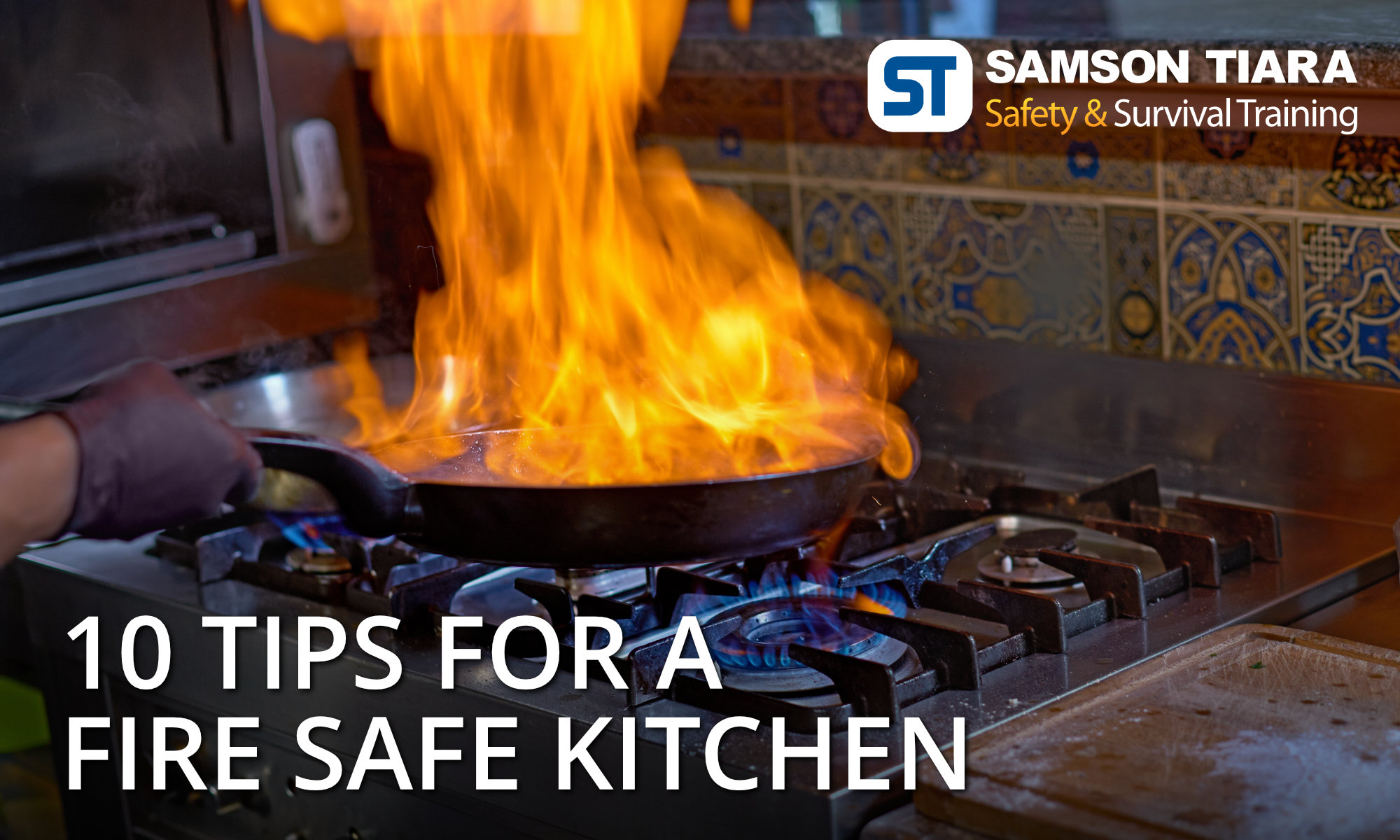Your home is your sanctuary; it’s where your family is, where you carry out many of your hobbies and where you rest your body and soul after a long day at work. But while it may be a sanctuary, this does not mean it is completely safe. One of the biggest risks to safety in the home is fire and almost 60% of fires in the home begin in the kitchen. A simple grease fire while cooking can grow exponentially and engulf your entire home if not handled correctly. Therefore, it is important to pay attention to how you carry out tasks in the kitchen and Samson Tiara is happy to share these 10 tips are here to help keep you safe.
1. Cleanliness
Keeping your kitchen, cookware and utensils clean is one of the easiest things you can do to create a safe cooking environment. Not only is it a matter of basic food hygine, but over time a thin layer of fat and grease can build up on cabinents, counter tops, cook tops and utensils. This unsean layer of fat and grease can be transformed into a flashpoint and fuel source and aid a fire in spreading beyond the initial source.
It is also wise to clean and inspect electric appliances, such as toasters, frequently. Over repeated use, flamable materials, like bread crumbs, can build up in these appliances and provide a fuel source for a potential fire.
2. Adequate Workspace
As with any task, it is important to ensure that adequate workspace is available. Ensure that there is a safe distance between any combustable materials and open flames or heat sources. Materials such as grocery bags, towels, plastic wrap, cutting boards and so on can combust if subjected to enough heat.
Having a properly arranged workspace can also help avoid injury as cutting or preparing ingredients in a cramped environment or too close to the heat source may lead to unintentional burns or spills, and inturn increase the risk of fire.
Turn pot and pan handles away from the front of the cook top, either to the side, or to the back if safe to do so. Pot handles facing forward are easily bumped when moving about the kitchen and could result in an accidental spill and fire.
While ensuring they are kept a safe distance away from the heat source, always keep pot and pan lids and an oven mitt within reach if needed in an emergency.
3. Be Present
Never leaving cooking unattended. If for some reason you need to leave the kitchen, even for a moment, it is recommended to turn off heat sources, particularly if you are frying, broiling or grilling. Cooking left unattended is one of the leading causes of kitchen fires and being present to react to any incident can make all the difference.
It is also strongly advised to use a kitchen timer when cooking to help ensure that food is not burnt, another leading cause of fire.
4. Clothing
Always be aware of your clothing. Loose or ill fitting clothing can easily fall into the heat source and catch fire, so it is better to choose close-fitting attire. If you have no other option, roll up your sleeves, tuck in your shirt or put on an apron to help keep clothing from coming too close to the heat source. You should also tie back your hair if it is long enough to fall into the heat source.
5. Crowd Control
The greater the number of people in the kitchen, the higher the likelihood of accidents. Unless they are directly involved in the cooking or preparation process, keep others out of the kitchen when a heat source is on. This especially applies to children and household pets. If they need to be in the kitchen for any reason please keep an eye on them, as their movements can often be unpredictable. It is advisable, where possible, to close off their access to the kitchen when cooking by using a retractable barrier or other means.
With children, teach them from a very early age about safety in the kitchen. Do not allow them to be near or to use heat sources without direct supervision, keep matches, candles and other heat and flame sources out of reach and ensure they know to NEVER play with fire.
6. Grease & Oil Management
When you finish cooking, never pour used cooking oil or grease down the drain or directly into the trash as this can start a fire or cause injury. Ensure that you have a proper container for grease and oil collection, such as a metal coffee can, and carefully pour the material into it. Once cool the container can be safely thrown in the trash.
7. Appliance & Electric Safety
Always ensure that power cables for appliances are neat and tidy and away from heat sources. When not in use, disconnect appliances from the power outlet and store them neatly. If your electrical outlets are equipped with a switch, turn them off when not in use. When using the microwave, remember to NEVER put metal objects inside and only use microwave safe bowls and dishes.
8. Safety Devices
While it is strongly advised to have smoke detectors in every room of the house, it is imperative to have one in the Kitchen. If your kitchen is not equipped with a smoke detector, have one installed as soon as possible. Check the batteries in the smoke detector at regular intervals, as recommended by the manufacturer, to ensure it is functioning correctly. It is also strongly recommended to have a multi-purpose fire extinguisher in the kitchen.
9. In Case of Fire
If a fire occurs in the kitchen, never use water to put it out as in many cases, this action can turn a small fire into a major one.
- If the fire was started by grease, the use of water can cause the flames to spread rapidly and out of control.
- If the fire source was another flamable source, water could unintentionally come into contact with power outlets or appliances that have not been unplugged and cause a short and possible fire.
If a fire starts from grease or cooking oil it should be extinguisned with either a fire extinguisher or by sliding a lid over the pot or pan to reduce the flames and cut off the oxygen supply. Remain calm at all times and ensure that you are wearing a mitten before touching any hot surface or placing your hands near the flames. Once safe to do so, cover the burnt material with wet fabric to cool it down and prevent the fire from restarting. Make sure that any electrical outlets or wiring is safe and if concerned turn the power to the kitchen off at the breaker until the situation is safe. If the fire spreads, get everyone out of the house and call for help.
10. Training
Knowing how to react to these situations quickly and correctly is very important as simple mistakes can be the difference between a small incident and a major emergency. The correct use of a fire extinguisher is another very important skill that everyone should have. The best way to obtain this knowledge is through basic education and training. A basic introductory course on fire safety and awareness is highly recommended, it is a small investment that can make all the difference in an emergency situation.
Conclusion
While this may seem like a lot to do or be mindful of, these are the most basic common tips and following them will greatly reduce the likeleyhood of fire in the kitchen. Samson Tiara is happy to assist in delivering basic firefighting training, with either live fires or using our state of the art digital fire simulator. This small investment is a worthwhile one to help protect your family and property from harm.
Sources & Further Reading
https://www.unionplus.org/blog/consumer-tips/emergency-how-deal-fire-kitchen
https://www.london-fire.gov.uk/media/1039/fsith_web.pdf
https://regentrestoration.com/kitchen-grease-fire-clean-up.html
https://www.london-fire.gov.uk/safety/the-home/cooking/
https://safety.lovetoknow.com/Kitchen_Fire_Prevention
https://www.wikihow.com/Prevent-a-Kitchen-Fire
https://www.propertyware.com/blog/8-top-kitchen-fire-safety-tips/



